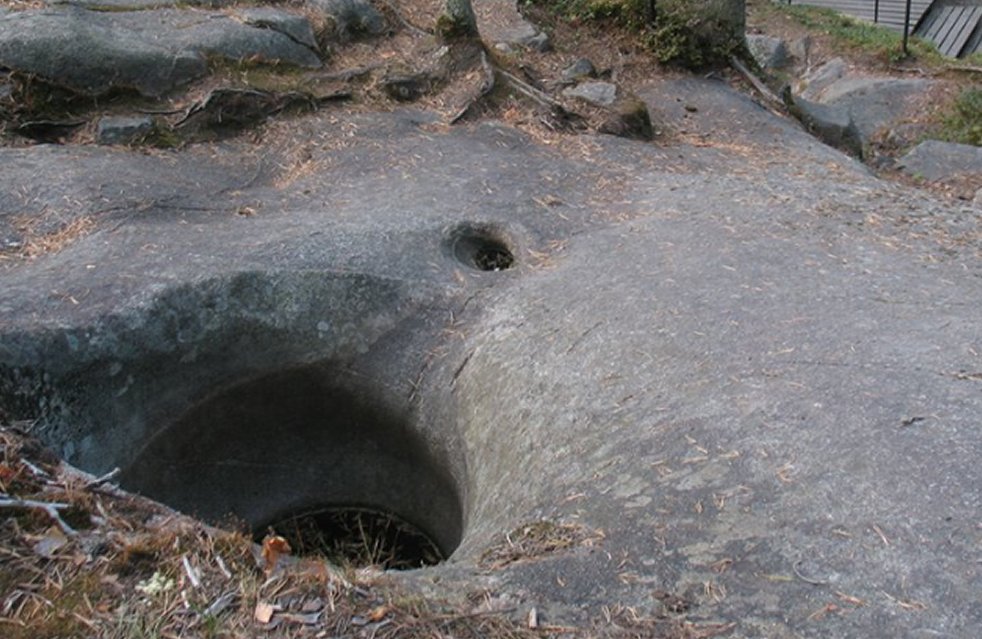Hiidenkirnut: Spectacular Millennia-Old Devil’s Churns In Finland
A. Sutherland - AncientPages.com - Great power of the glacial melting water and movement of stones created some of the most spectacular potholes often called Giant's Kettles (or Giant's cauldrons).
Legends of ancient people in the region say that these potholes were made by a devil who use to live here.
Potholes have got various mystical meanings and have long influenced imagination of people living in the vicinity of them.
The ancient local population were aware of what they called the "devil's churns" and they came up with stories like little devils that dwelled in their proximity. A common thought was that these devils had protected pagan locals from being converted but they had lost their fight and then had to hide. According to these little legends the potholes got their Finnish name.
Finland has approximately one hundred of these creations and they are known as "Hiidenkirnut" - the Devil's Churns. Fourteen of them are located in the region of Rovaniemi, about 10 kilometres (6 miles) south of the Arctic Circle Lapland, Finland's northernmost province.
Their inside is regular and very smooth and they appear to have been created by drilling machines.
However, most researchers agree they were formed by a circular motion of water from melting from glacial and mixed with stones and gravel. It was a natural process that began to take place at the end of the last ice age, 10,000-13,000 years ago.
No doubt, their formation is strongly connected to the presence of water and probably with ancient flood legends, people created on Earth through thousands of years.
The Devil's Churn is a desolated place that can be reached only by car. One of the ancient Finnish legends tells that the Devil (in Finnish: Hiisi), haunted this area very long time ago.
When he heard about a Swedish bishop coming to convert the locals into Christianity, Hiisi collected stones, rocks, and arrows, and dug out a deep hole in the bare rock to sit there in ambush. While Hiisi sat there, he also managed to prepare a deadly potion to use against the bishop and his crew.
Unfortunately, Hiisi’s plans failed because he was defeated by bishop’s guards and eventually, he fled the Devil’s Churn, but the name of the place remains.
See also:
Lemminkainen: Mythical War-Hero Of Finnish Great Epic ‘Kalevala’
The biggest Giant’s s Kettle (with a diameter of 15.5 meters and a depth of about 13 meters) can be found in municipality of Salla in the southern part of Finland.
Otherwise, there are four more these kettle-shaped holes in the area, with diameters ranging from 5 to 15 meters.
The Devil's churns of Rovaniemi have always fascinated people and scientists, who studied them for the first time in 1966-67.
Today there is no ancient debris in them, only water, to which people use to throw coins and make a wish, most probably to the devil, just in case, he is somewhere in the vicinity and can hear them.
There are other potholes or kettle-like holes - varying in size from a few inches to several feet in depth and diameter – in Norway, Sweden, Germany, Switzerland and USA.
Pennsylvania’s Archbald Pothole (a remnant of the Wisconsin Glacial Period) is 38 feet (11.6 m) deep with a largest diameter of 42 feet (12.8 m) by 24 feet (7.3 m).
Written by – A. Sutherland AncientPages.com Staff Writer
Copyright © AncientPages.com All rights reserved. This material may not be published, broadcast, rewritten or redistributed in whole or part without the express written permission of AncientPages.com
Expand for referencesMore From Ancient Pages
-
 Huge Defensive Wall Excavated At Tel Erani, Israel Is More Than 5,300 Years Old
Archaeology | Sep 12, 2019
Huge Defensive Wall Excavated At Tel Erani, Israel Is More Than 5,300 Years Old
Archaeology | Sep 12, 2019 -
 10 Mysterious Ancient Stones In North America That Could Re-Write History
Civilizations | May 25, 2020
10 Mysterious Ancient Stones In North America That Could Re-Write History
Civilizations | May 25, 2020 -
 The Maya Produced Rubber 3,000 Years Before Goodyear
Ancient History Facts | Mar 12, 2016
The Maya Produced Rubber 3,000 Years Before Goodyear
Ancient History Facts | Mar 12, 2016 -
 Humans Used Shells As Body Ornaments 30,000 Years Ago – Discovery In Malaga’s Cueva de Ardales Reveals
Archaeology | Jun 8, 2023
Humans Used Shells As Body Ornaments 30,000 Years Ago – Discovery In Malaga’s Cueva de Ardales Reveals
Archaeology | Jun 8, 2023 -
 Controversial Tartaria Tablets: The First Writing System In The World?
Artifacts | Nov 13, 2014
Controversial Tartaria Tablets: The First Writing System In The World?
Artifacts | Nov 13, 2014 -
 Copiale Cipher – Secrets Of Mysterious Coded Manuscript And The Oculist Order
Artifacts | Feb 4, 2019
Copiale Cipher – Secrets Of Mysterious Coded Manuscript And The Oculist Order
Artifacts | Feb 4, 2019 -
 Mystery Of Moses’ Double Mask, Dramatic Personality Change And The Hidden Prophet – What Did Really Happen On Mount Sinai?
Ancient Mysteries | Jun 25, 2018
Mystery Of Moses’ Double Mask, Dramatic Personality Change And The Hidden Prophet – What Did Really Happen On Mount Sinai?
Ancient Mysteries | Jun 25, 2018 -
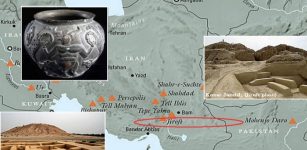 Archaeologists Survey Bronze Age Konar Sandal Site In Southeast Iran
Archaeology | Feb 17, 2021
Archaeologists Survey Bronze Age Konar Sandal Site In Southeast Iran
Archaeology | Feb 17, 2021 -
 Change Of Burial Tradition Among The People of Early Medieval Europe
Archaeology | Aug 6, 2021
Change Of Burial Tradition Among The People of Early Medieval Europe
Archaeology | Aug 6, 2021 -
 Why Is Europe Called Europe?
Ancient History Facts | Apr 21, 2016
Why Is Europe Called Europe?
Ancient History Facts | Apr 21, 2016 -
 Quatrefoil Symbol Was Used By The Olmecs And Maya Long Before It Appeared On Christians Churches
Ancient Symbols | Mar 19, 2018
Quatrefoil Symbol Was Used By The Olmecs And Maya Long Before It Appeared On Christians Churches
Ancient Symbols | Mar 19, 2018 -
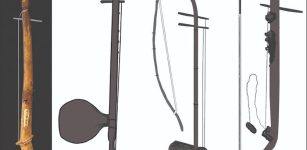 2,000-Year-Old Stringed Instrument Found In Vietnam
Archaeology | Feb 22, 2023
2,000-Year-Old Stringed Instrument Found In Vietnam
Archaeology | Feb 22, 2023 -
 Kuthodaw Pagoda – ‘The World’s Largest Book’ Carved In 729 Marble Slabs
Featured Stories | Feb 24, 2018
Kuthodaw Pagoda – ‘The World’s Largest Book’ Carved In 729 Marble Slabs
Featured Stories | Feb 24, 2018 -
 Cousin-Marriages Were Uncommon In The Ancient World
Archaeology | Sep 14, 2021
Cousin-Marriages Were Uncommon In The Ancient World
Archaeology | Sep 14, 2021 -
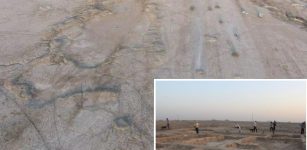 Large 4,000-Year-Old Sumerian Port Discovered In The Desert In Iraq
Archaeology | Apr 4, 2018
Large 4,000-Year-Old Sumerian Port Discovered In The Desert In Iraq
Archaeology | Apr 4, 2018 -
 Fragarach: Supernatural Sword That Controlled Winds, Cut Through Wood, Metal And Bricks In Irish Myths And Legends
Celtic Mythology | May 14, 2020
Fragarach: Supernatural Sword That Controlled Winds, Cut Through Wood, Metal And Bricks In Irish Myths And Legends
Celtic Mythology | May 14, 2020 -
 Rohonczi Codex Still Undeciphered – Is It The Most Secret Book Written In A Code?
Artifacts | May 30, 2014
Rohonczi Codex Still Undeciphered – Is It The Most Secret Book Written In A Code?
Artifacts | May 30, 2014 -
 On This Day In History: British Fleet Attacked The Spanish ‘Invincible Armada’ – On July 21, 1588
News | Jul 21, 2016
On This Day In History: British Fleet Attacked The Spanish ‘Invincible Armada’ – On July 21, 1588
News | Jul 21, 2016 -
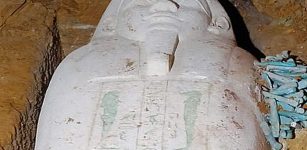 Limestone Sarcophagus, Ushabti Figures Unearthed In Minya’s Al-Gharafa Area, Egypt
Archaeology | Oct 3, 2020
Limestone Sarcophagus, Ushabti Figures Unearthed In Minya’s Al-Gharafa Area, Egypt
Archaeology | Oct 3, 2020 -
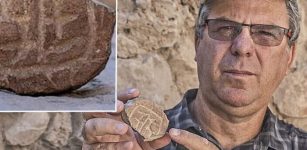 A Seal Impression Dated To Persian Period Discovered In The City Of David
Archaeology | Jul 3, 2020
A Seal Impression Dated To Persian Period Discovered In The City Of David
Archaeology | Jul 3, 2020



